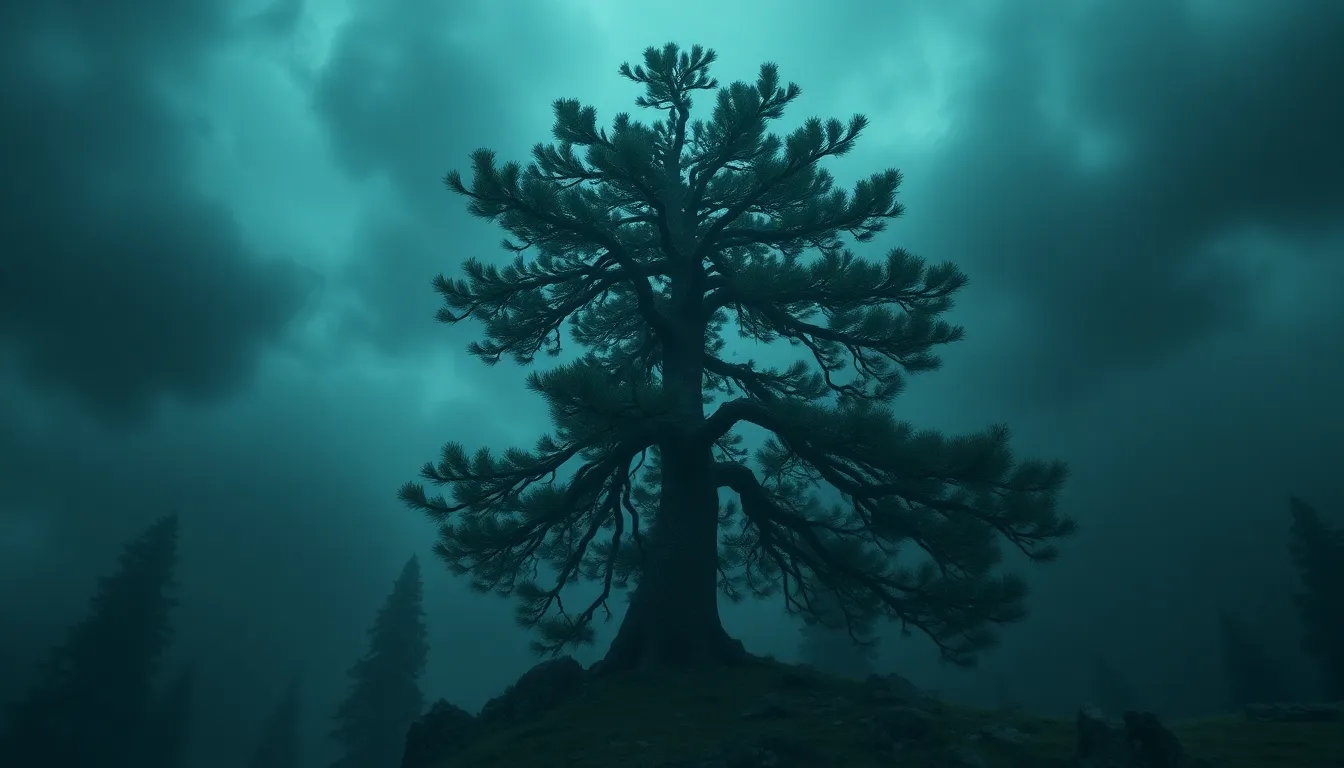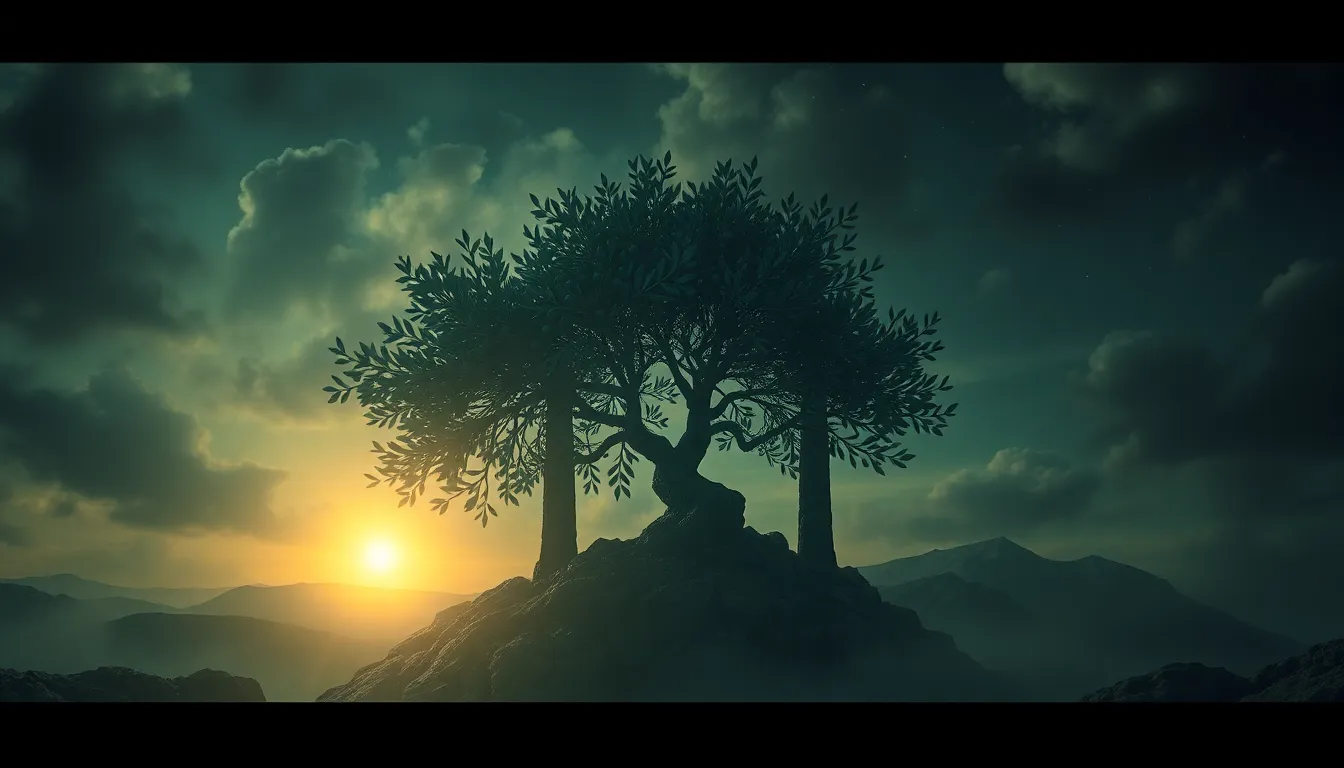The Tree of Echoes: Myths of Memory and Legacy
I. Introduction to the Tree of Echoes
The Tree of Echoes serves as a profound symbol within various mythologies, representing the interconnectedness of memory and legacy. This mythical tree embodies the idea that our memories and the legacies we leave behind are intricately woven into the fabric of our identities.
Throughout history, themes of memory and legacy have been central to mythology, offering insight into how different cultures understand their past and envision their future. Myths, as living narratives, help preserve cultural values and shared experiences, shaping the identities of communities.
The purpose of this article is to explore the rich cultural narratives surrounding the Tree of Echoes and examine their impact on personal and collective identity across generations.
II. The Symbolism of Trees in Mythology
Trees are a universal symbol across cultures, often representing life, growth, and continuity. Their deep roots and lofty branches mirror the human experience, showcasing our connection to the earth and to one another.
- The tree as a metaphor: Trees symbolize various aspects of life, including sustenance, shelter, and the passage of time.
- Growth and renewal: Just as trees grow and shed leaves, humans experience cycles of growth, change, and rebirth.
Several mythological trees illustrate these themes:
- Yggdrasil: In Norse mythology, Yggdrasil is the World Tree, connecting all realms of existence and symbolizing the interdependence of life.
- The Bodhi Tree: In Buddhism, this tree represents enlightenment and the journey to spiritual awakening.
III. Echoes of Memory: How Myths Preserve the Past
Oral tradition plays a crucial role in preserving memories, allowing stories to be passed down through generations. Myths serve as vessels of collective memory, encapsulating the experiences, values, and beliefs of cultures.
Specific case studies highlight how myths embody historical events:
- The Trojan War: Greek mythology preserves the memory of this epic conflict, emphasizing themes of heroism, tragedy, and the consequences of hubris.
- The Great Flood: Found in various cultures, this myth reflects humanity’s struggle with nature and serves as a reminder of resilience.
IV. Legacy and the Continuity of Cultural Identity
Legacy, in the context of memory and mythology, refers to the transmission of cultural values and stories that shape identities over time. Myths are instrumental in defining cultural identity, offering a framework through which individuals understand their place in the world.
Myths shape our cultural identity across generations by:
- Preserving traditions: Myths maintain cultural practices, ensuring that they are not lost to time.
- Fostering community: Shared myths create bonds among individuals, fostering a sense of belonging.
The impact of legacy is evident in contemporary society, influencing everything from art to politics and social movements.
V. The Tree of Echoes in Different Cultures
The Tree of Echoes manifests in various interpretations across cultures, each reflecting unique beliefs and values:
- Native American interpretations: Many tribes view the Tree of Life as a symbol of interconnectedness among all living beings, emphasizing respect for nature.
- The Tree of Knowledge: In Judeo-Christian traditions, this tree symbolizes the quest for knowledge and the consequences of seeking forbidden wisdom.
- African folklore: Ancestral trees represent the lineage and wisdom of ancestors, reinforcing the importance of honoring one’s heritage.
VI. The Intersection of Memory, Myth, and Personal Legacy
Personal narratives often intersect with mythological elements, illustrating how individual experiences contribute to broader cultural storytelling. Each person’s memory can add depth to communal narratives, enriching the collective memory.
Personal legacies significantly impact cultural storytelling by:
- Influencing narratives: Individual stories can inspire myths and cultural tales, shaping how communities remember their past.
- Creating connections: Personal experiences resonate with collective memory, fostering empathy and understanding among different generations.
VII. The Role of Nature in Mythical Narratives
Nature serves as a repository of memory in myths, offering a rich backdrop for storytelling. Trees, in particular, symbolize the enduring connection between humanity and the natural world.
The environmental implications of myths surrounding trees are significant, as they often advocate for stewardship of the earth and respect for natural resources. Modern storytelling increasingly incorporates themes of nature and memory, reflecting contemporary concerns about environmental sustainability.
VIII. Contemporary Reinterpretations of Myth
In recent years, there has been a resurgence of interest in myths within modern literature and media. Contemporary artists and writers engage with the Tree of Echoes, reinterpreting ancient stories for today’s audiences.
This evolution of myth in the digital age is evident in:
- Literature: Novels and poetry often draw on mythological themes to explore identity and legacy.
- Film and television: Adaptations of myths introduce timeless stories to new generations, often emphasizing their relevance in contemporary society.
IX. Lessons from the Tree of Echoes for Future Generations
The Tree of Echoes offers valuable lessons for future generations, emphasizing the importance of remembering and honoring legacies. Myths can guide choices and actions, providing wisdom derived from past experiences.
As we navigate the complexities of modern life, the narratives woven through the Tree of Echoes remind us of our shared humanity and the legacies we leave behind for those who come after us.



